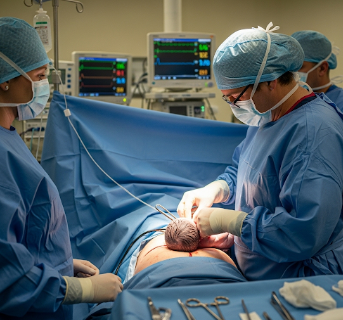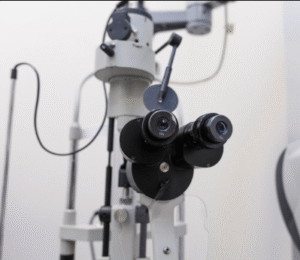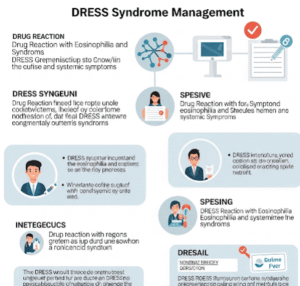Overview
A Caesarean section (C-section) is a surgical procedure to deliver a baby through incisions in the abdomen and uterus. It is performed when a vaginal delivery may pose risks to the mother or baby.
Importance of C-section:
- Provides a safe delivery option when vaginal birth is high-risk.
- Reduces maternal and fetal complications in certain conditions.
- Allows delivery in emergency or planned scenarios.
- Ensures timely intervention for complicated pregnancies.
In South Korea, C-sections are routinely performed in maternity hospitals and specialized obstetric centers, with high safety standards, advanced anesthesia, and post-operative care.
Why It’s Done
C-section is performed when vaginal delivery is unsafe or complicated.
Common indications include:
- ➤ Labor complications: Prolonged labor, stalled labor, or fetal distress.
- ➤ Placental problems: Placenta previa or placental abruption.
- ➤ Multiple pregnancies: Twins, triplets, or higher-order multiples.
- ➤ Abnormal fetal position: Breech or transverse lie.
- ➤ Previous uterine surgery: History of C-section or uterine surgery.
- ➤ Maternal medical conditions: Hypertension, diabetes, heart disease, or infections.
- ➤ Emergency situations: Umbilical cord prolapse, fetal hypoxia, or trauma.
Benefits for patients:
- ✔️ Reduces risk of maternal and fetal injury in high-risk deliveries.
- ✔️ Provides controlled, timely delivery in emergencies.
- ✔️ May prevent complications associated with difficult vaginal deliveries.
Alternatives
While vaginal delivery is natural, alternatives depend on the situation:
- ➤ Planned vaginal delivery: For uncomplicated pregnancies.
- ➤ Instrumental vaginal delivery: Forceps or vacuum-assisted birth when labor is prolonged.
- ➤ Trial of labor after C-section (TOLAC): In selected women with prior C-section, vaginal birth is attempted under supervision.
Key point: C-section is preferred when maternal or fetal safety is at risk, whereas alternatives may be safe in uncomplicated pregnancies.
Preparation
Preparation for a C-section involves medical evaluation and planning.
Steps include:
- ✅ Prenatal assessment: Ultrasound, maternal health evaluation, and fetal monitoring.
- ✅ Blood tests: Complete blood count, coagulation profile, and blood type crossmatch.
- ✅ Fasting: Typically 6–8 hours before surgery.
- ✅ Medication review: Adjust medications, particularly anticoagulants or diabetic drugs.
- ✅ Consent and counseling: Discuss anesthesia options, procedure risks, recovery, and breastfeeding support.
- ✅ Preoperative hygiene: Shower and cleansing as instructed by the hospital.
Important: Adequate preparation reduces surgical complications and improves recovery.
How It’s Done
C-section is a surgical procedure under regional (spinal/epidural) or general anesthesia.
Step-by-step process:
- Anesthesia administration: Regional anesthesia allows the mother to remain awake; general anesthesia used in emergencies.
- Abdominal incision: Usually a horizontal (bikini) incision in the lower abdomen.
- Uterine incision: A low transverse incision is made in the uterus.
- Delivery of the baby: The baby is carefully delivered, umbilical cord clamped and cut.
- Placenta removal: Placenta is removed, uterine cavity checked for bleeding.
- Closure: Uterine and abdominal layers stitched; surgical drains if needed.
- Immediate newborn care: Baby is assessed, cleaned, and monitored.
Duration: Typically 45–60 minutes; may vary in emergencies or complicated cases.
Hospital stay: 3–5 days for recovery and monitoring.
Recovery
Recovery after C-section requires careful post-operative monitoring and gradual resumption of activities.
Immediate post-op:
- Monitoring of vital signs, bleeding, and uterine contraction.
- Pain management using analgesics.
- Early mobilization encouraged to prevent blood clots.
Short-term recovery:
- Incision care to prevent infection.
- Gradual return to normal activities over 2–6 weeks.
- Support with breastfeeding and newborn care.
Long-term recovery:
- Avoid heavy lifting for 6–8 weeks.
- Monitor for signs of infection, abnormal bleeding, or pain.
- Attend postpartum checkups for maternal and neonatal health.
Important: Proper recovery ensures optimal healing and reduces complications.
Possible Complications
C-section is generally safe but carries surgical risks:
- ⚠️ Infection – incision or uterine infection.
- ⚠️ Bleeding – may require transfusion.
- ⚠️ Blood clots – deep vein thrombosis or pulmonary embolism.
- ⚠️ Injury to organs – bladder, bowel, or ureters (rare).
- ⚠️ Adhesions or scar tissue – may affect future pregnancies.
- ⚠️ Anesthesia-related complications – nausea, hypotension, or allergic reactions.
- ⚠️ Delayed recovery – longer than vaginal birth, with post-op discomfort.
In South Korea, advanced surgical protocols, anesthesia safety, and post-operative care minimize risks and ensure high success rates.
Treatment Options / Clinical Relevance in Korea
C-section is widely practiced in South Korea, both as an elective and emergency procedure.
Key features:
- 🏥 State-of-the-art maternity hospitals with advanced operating theaters.
- 🏥 Experienced obstetric teams including anesthesiologists, neonatologists, and surgical nurses.
- 🏥 Pre- and post-operative care integrated with prenatal and postnatal monitoring.
- 🏥 Pain management programs and physiotherapy support early recovery.
- 🏥 Emergency C-sections available for fetal distress or maternal complications.
Hospitals offering C-section in Korea:
- Samsung Medical Center – High-volume maternity and surgical care
- Asan Medical Center – Advanced obstetrics and neonatal care
- Seoul National University Hospital – Comprehensive maternal-fetal program
- CHA Gangnam Medical Center – Specialized C-section and prenatal care
Highlights in Korea:
- ✔️ High safety standards ensure minimal maternal and neonatal complications.
- ✔️ Elective and emergency C-sections widely available.
- ✔️ Integration with prenatal care programs improves outcomes for both mother and baby.
- ✔️ Postoperative support includes pain control, wound care, and breastfeeding assistance.
Highlights
- ➤ C-section is a surgical procedure to deliver a baby safely when vaginal birth is high-risk.
- ➤ Indications include labor complications, abnormal fetal position, placenta problems, or maternal medical conditions.
- ➤ Alternatives include vaginal delivery, instrumental delivery, or trial of labor after C-section (TOLAC).
- ➤ Preparation involves prenatal assessment, blood tests, fasting, and anesthesia planning.
- ➤ Procedure duration: 45–60 minutes under regional or general anesthesia.
- ➤ Recovery requires hospital stay, incision care, pain management, and gradual return to activities.
- ➤ South Korea provides advanced C-section services with skilled obstetric teams, emergency readiness, and integrated post-operative care.













